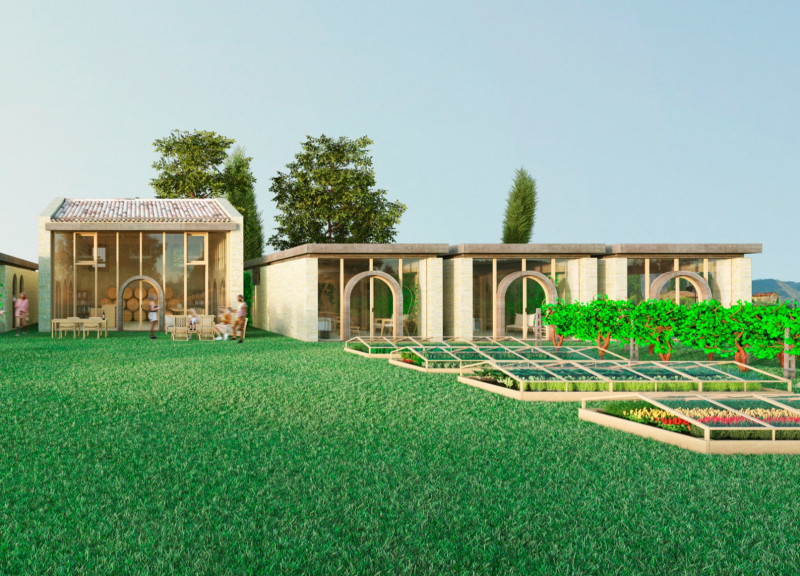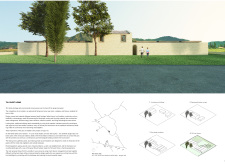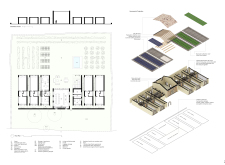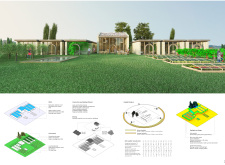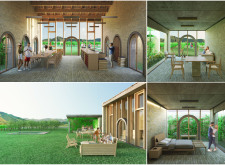5 key facts about this project
The architecture of the Tili Guest Home captures the essence of the region through its careful selection of materials and layout. One of the most notable features is the use of locally sourced stone for the exterior walls, which not only provides structural integrity but also allows the building to blend seamlessly with the surrounding terrain. The clay tile roof, a common element in traditional Italian buildings, adds character and historical significance to the design while contributing to energy efficiency by enhancing thermal performance.
The functionality of the Tili Guest Home is well thought out, with the design incorporating both private and shared spaces. Individual guest units are designed to prioritize guest privacy, each featuring large windows that provide uninterrupted views of the picturesque landscape. This thoughtful planning ensures comfort while encouraging a sense of connection to the outdoors. The common areas, such as dining and gathering spaces, are strategically located at the center of the project, promoting social interaction among guests and enhancing the overall communal experience.
Unique design approaches are evident throughout the Tili Guest Home, underscoring a nuanced understanding of sustainability. The project incorporates natural ventilation techniques designed to reduce energy consumption, ensuring that indoor environments remain comfortable year-round. Moreover, the integration of rainwater harvesting systems exemplifies a commitment to resource management, allowing the building to sustain its gardens and green spaces with minimal environmental impact.
The architectural plans reveal a strong emphasis on fostering a connection with nature. Landscape elements are thoughtfully integrated into the site, encouraging guests to explore agricultural practices and connect with local biodiversity. This is further emphasized through carefully designed gardens that not only enhance the visual appeal but also serve educational purposes, allowing guests to engage with the agricultural themes that inform the project's ethos.
In discussing the architectural design of the Tili Guest Home, it is clear that every element has been meticulously considered to create a cohesive narrative that blends modernity with tradition. The attention to detail in both the materials and spatial arrangement reflects a commitment to quality and sustainability that is becoming increasingly relevant in contemporary architectural practice. These design ideas and the overall approach of the Tili Guest Home make it a noteworthy example of how architecture can play a pivotal role in promoting eco-friendly living while honoring cultural significance.
For those interested in a deeper understanding of the Tili Guest Home, exploring the architectural plans, sections, and detailed designs will offer valuable insights into the thoughtful processes that shaped this project. Engaging with the various elements of the design will enhance appreciation for the interplay of functionality, aesthetics, and sustainability that define the Tili Guest Home.


